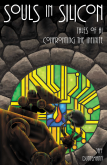I found the circuit below by accident, while flipping through my library of Popular Electronics looking for something else. It was published in the October 1961 issue, and caught my interest because a friend of mine built it back in 1964. It was a cool thing to watch in action. It’s an electroscope that detects static charge by using the grid in a vacuum tube to control conduction. Bring an object with a static charge on it within a couple of feet of the detector disk, and the NE-2 neon bulb will light or dim, its brightness proportional to the strength and polarity of the charge. Positive charges make the bulb glow more brightly. Negative charges will dim it, or even darken it completely if the charge is strong enough to force the tube into cutoff.
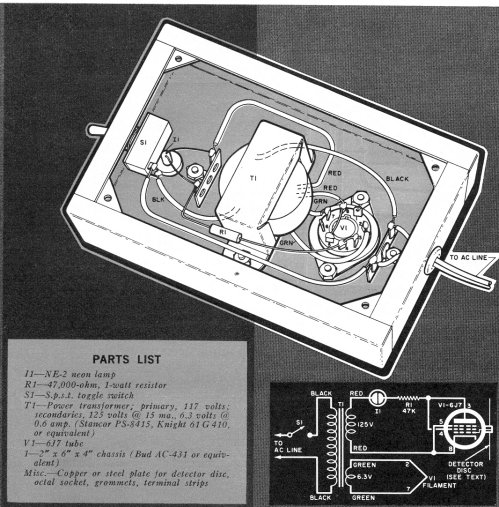
(The full article can be found here–2.6 MB PDF.) The detector is a metal disk five or six inches in diameter. It can be any conductive metal. When Art built his he used sheet aluminum and it worked just fine. The center hole is sized to press-fit on the grid cap of a 6J7, which is connected to the tube’s control grid. The 6J7 works well here because it’s a metal tube, and is inherently shielded by its metal shell. (The article doesn’t call it out, but I think pin 1, connected to the shell, should be grounded to the chassis.) A 6K7 or 6S7 will substitute pin-for-pin, and I think any metal tube with the control grid brought out to a cap will work if you get the pin connections right for the tube type. NOS tubes of this sort can be had for $5-$6 from places like Antique Electronic Supply. I don’t know how well the GT (glass) versions of the tube will work, since they lack the total shielding of the “standard” 6J7’s metal shell.
The power transformer called out was common and cheap back in the day, but you’d be hard-pressed to find one now. The usual dodge is to use two 6.3V filament transformers, and connect them back-to-back. (These used to be sold at Radio Shack. I’m not sure if they are anymore.) You can light the filament from the joined 6.3V secondaries, and take isolated 120VAC from the primary of the second transformer. The 6J7’s heater current is 300 ma. Any filament transformer that can source that much current will do.
I find it interesting that raw AC is applied to the plate of the tube without rectification. The current is in fact rectified by the tube (tubes conduct in only one direction) with rectifier current controlled by the 6J7’s first grid. My first thought was that it works like a thyratron, but there’s no latching effect. Current through the tube is controlled by the charge on the grid, and then in a linear way.
It would be interesting to figure out a circuit that would indicate with a sensitive meter rather than a neon bulb, and if I build it I may try a few things. The only cautions I offer here relate to the voltage: 120V, even isolated from the wall, is dangerous. Don’t work on the circuit with power applied. To be safe, yank the plug out of the wall before you open the box or flip the chassis over. There’s no voltage on the detector plate, so that can be touched even while the device is on.
All that said, it’s a great entry-level demonstration of how vacuum tubes work.
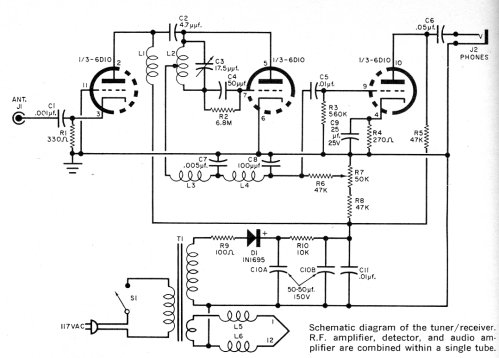
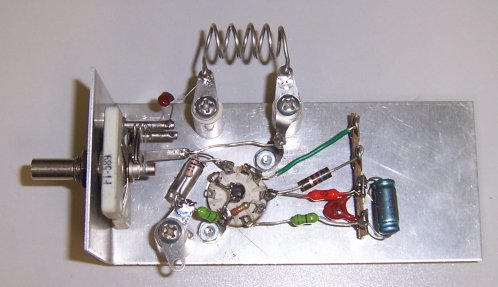
 Here’s a challenge for some of my older readers, particularly those who were in the hi-fi hobby in the 1960s. While looking for the photo of Carol’s banner mentioned in
Here’s a challenge for some of my older readers, particularly those who were in the hi-fi hobby in the 1960s. While looking for the photo of Carol’s banner mentioned in 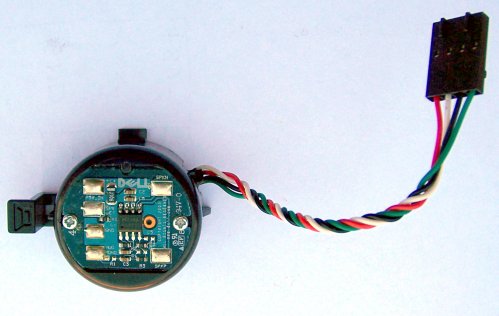 I bought a Dell Optiplex GX620 USFF (Ultra-Small Form Factor) machine last week, and it came without an internal speaker. I didn’t know the speaker was optional until a machine turned up without one, but a look at my three SX280 USFF machines (built in exactly the same case) showed a very small plastic unit that pulls easily out of the chassis when you lift a plastic tab. It’s wired to the mobo through a conventional 4-pin header. And most interesting of all, it has circuitry on its back.
I bought a Dell Optiplex GX620 USFF (Ultra-Small Form Factor) machine last week, and it came without an internal speaker. I didn’t know the speaker was optional until a machine turned up without one, but a look at my three SX280 USFF machines (built in exactly the same case) showed a very small plastic unit that pulls easily out of the chassis when you lift a plastic tab. It’s wired to the mobo through a conventional 4-pin header. And most interesting of all, it has circuitry on its back.
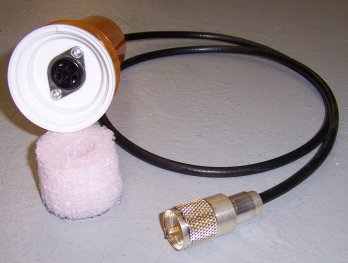 But first, a couple of notes on the probe I made. I noticed years ago that a species of pill bottle with a two-way cap allows two bottles to be connected at the cap. It occurred to me that one of these bottles was by sheer chance just about the size of an Amperex 75NB3 Geiger tube. So I mounted the JEDEC A3-1 socket in the cap, and cut a foam doughnut with an Exacto knife so that it would fit (with just a little compression) inside one of the bottles. A 5/8″ hole in the doughnut keeps the Geiger tube centered and immobile inside the bottle. I put a PL-259 on the cable because I have a lot of PL-259’s here, and they have a pleasing sort of retro look to them, especially after they tarnish. (This one was new from a sealed bag. It won’t look so shiny next year.)
But first, a couple of notes on the probe I made. I noticed years ago that a species of pill bottle with a two-way cap allows two bottles to be connected at the cap. It occurred to me that one of these bottles was by sheer chance just about the size of an Amperex 75NB3 Geiger tube. So I mounted the JEDEC A3-1 socket in the cap, and cut a foam doughnut with an Exacto knife so that it would fit (with just a little compression) inside one of the bottles. A 5/8″ hole in the doughnut keeps the Geiger tube centered and immobile inside the bottle. I put a PL-259 on the cable because I have a lot of PL-259’s here, and they have a pleasing sort of retro look to them, especially after they tarnish. (This one was new from a sealed bag. It won’t look so shiny next year.)





